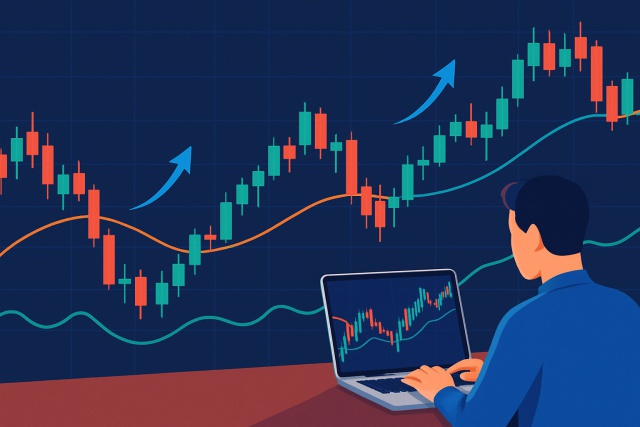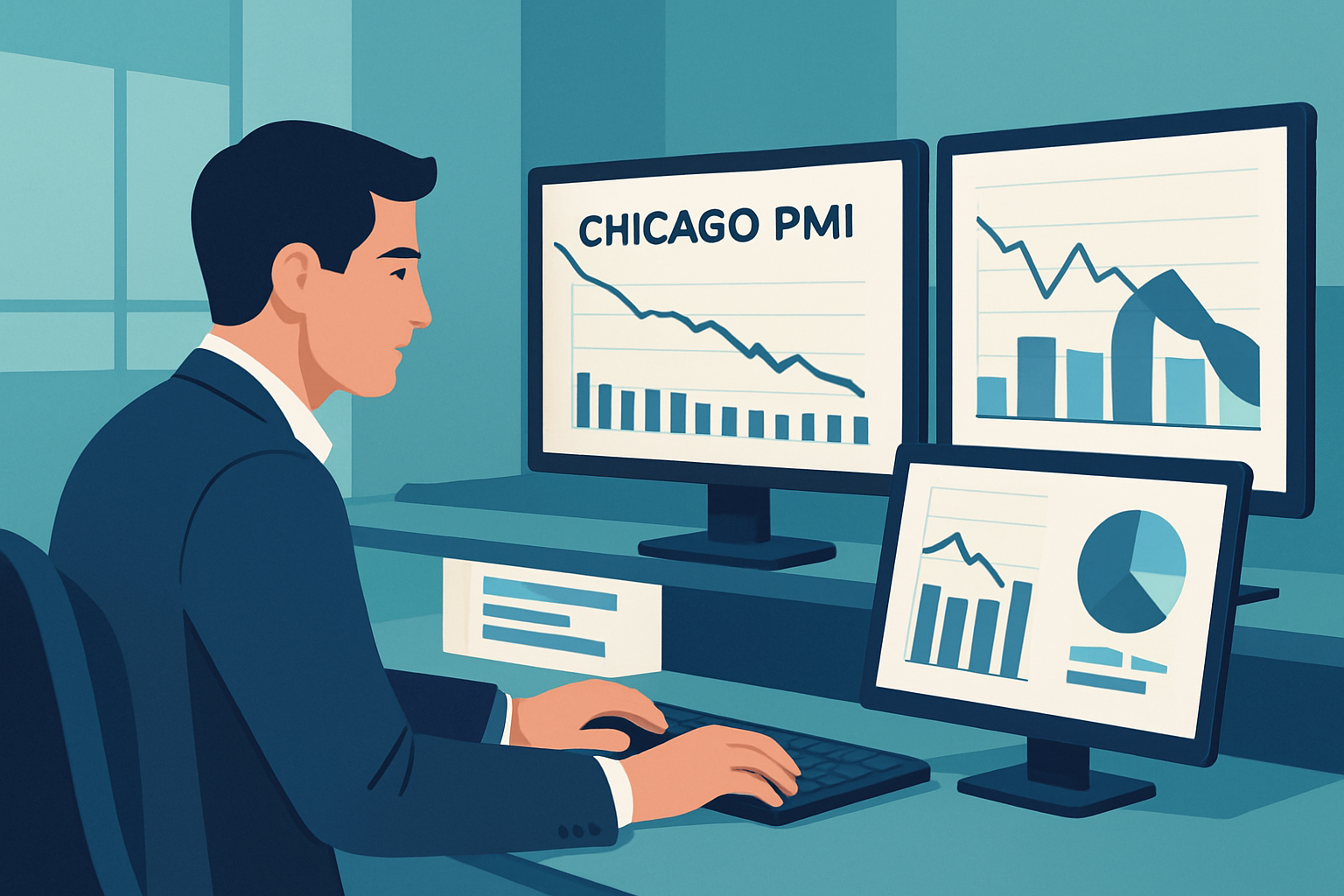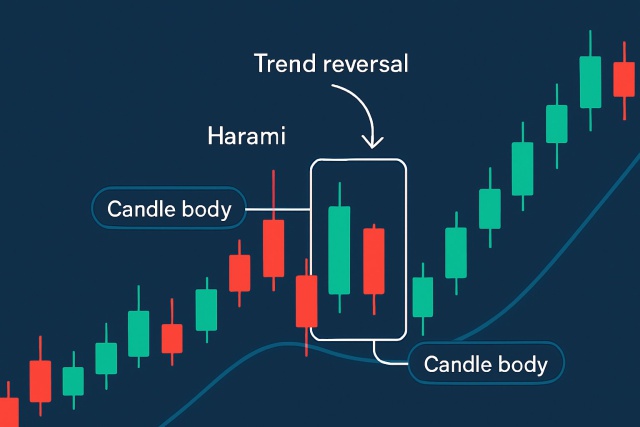
Most Important Candle Patterns Every Trader Should Know
Unlock the power of candle patterns to decode market psychology and improve your trading precision....

The Chicago Purchasing Managers Index (PMI) is a key monthly indicator that gives a pretty clear snapshot of how the manufacturing sector is faring in the Midwest. For traders, keeping tabs on the Chicago PMI often unveils useful hints about the region's economic pulse.
The Chicago PMI compiled by the individuals at the Institute for Supply Management-Chicago is essentially a diffusion index born from monthly surveys of purchasing managers in manufacturing companies. It combines their views on production, new orders, employment, supplier deliveries and inventories to paint a picture of manufacturing activity and the overall economic mood in the area.
The Chicago PMI is a key barometer for gauging how manufacturing is faring in the region and often acts like an economic canary in the coal mine that hints at the bigger picture. It usually moves in step with GDP growth and job trends. It also reflects industrial output, painting a picture that’s hard to ignore.
Chicago PMI readings over 50 usually signal manufacturing growth, while those below 50 hint at a slowdown. Traders often keep a sharp eye on both monthly and sequential changes to catch subtle shifts in momentum.
| Chicago PMI Range | Economic Implication | Typical Market Sentiment Impact |
|---|---|---|
| Above 60 | Points to robust expansion | Bullish; often sparks confidence in the market |
| 55 - 60 | Indicates steady, moderate growth | Positive; suggests the economy’s on an uptrend |
| 50 - 55 | Implies mild expansion | Neutral to positive; cautious optimism is the name of the game |
| 45 - 50 | Shows slight contraction | Negative; raises a few red flags about slowing down |
| Below 45 | Signals notable contraction | Bearish; usually gets people worried about a possible recession |
It’s common to either blow small ups and downs out of proportion or completely miss the bigger trend. Those short-term quirks or sudden shifts in a single sub-index can trip up traders unless they keep an eye on expectations, seasonal patterns and other key indicators that tend to fly under the radar.
The Chicago PMI shines a spotlight on the manufacturing sector's health in the Midwest and gives us a handy regional snapshot. Other PMIs like the ISM PMI or New York PMI cast a wider net with broader national or regional perspectives. Each report brings its own flavor—timing quirks, local economic twists and industry mixes all play their part—working together to paint a fuller picture of the market.
Traders often mix Chicago PMI data with other market signals to time their moves a bit more precisely and tweak their positions across various asset classes.
Keep an eye on the PMI trend to understand the overall economic vibe and adjust your portfolios toward growth or defensive sectors as needed.
Try to plan your entry and exit points around PMI release dates. These moments can really shake up the market and offer great opportunities to ride shifts in sentiment.
Use PMI data together with technical analysis tools like moving averages and trendlines to help confirm what the charts suggest.
Don’t overlook changes in PMI sub-components. They can provide early clues about supply chain issues or shifts in employment patterns that might impact certain sectors more than others.
Incorporate PMI data into your risk management strategy by adjusting stop-loss levels and hedging exposure when the economic outlook feels uncertain.
Back in early 2020 a sudden drop in the Chicago PMI gave an early warning about the widespread economic shake-up the pandemic was about to unleash. Naturally this pushed traders to pull back from manufacturing-related stocks and commodities and play it cautiously. Conversely the steady PMI gains we saw in late 2020 hinted at a slow but sure recovery and sparked some well-timed rallies in both equities and commodities.

Trader examining Chicago PMI data and charts to inform market decisions during report release.
Understanding the Chicago PMI begins by grabbing the report right when it’s released and taking a close look at its various parts and trends.
Quickly tap into the latest Chicago PMI data straight from the official ISM-Chicago sources or trusted financial news outlets because you don’t want to miss the freshest scoop.
Do not just glance at the headline PMI number. Dive into key sub-indexes like New Orders and Employment to really understand what’s behind those shifts.
Take a moment to compare the current numbers with recent months and last year. This is often where you catch sneaky trends and seasonal quirks.
Peek at consensus forecasts and market expectations to figure out if the report lands as a pleasant surprise or a curveball.
Use these insights to steer your trading decisions whether that means jumping in, hanging tight or stepping back, always keeping your broader game plan in sight.
It’s a smart move to combine Chicago PMI insights with other key data like employment reports and national PMIs. Think of it as putting together a jigsaw puzzle rather than relying on a single piece. Platforms such as TradingView come packed with advanced charting tools and technical indicators. These tools allow traders to layer PMI data onto price movements and help in teasing out more precise signals.
The Chicago PMI is a handy tool though it has its quirks. Since it focuses on one region it doesn’t always capture what’s happening nationally or globally. Plus, as a diffusion index built on surveys it often reacts sluggishly to sudden shocks or curveball events.
"No single economic indicator can paint the full picture on its own. The Chicago PMI offers some pretty useful regional insights, but in my experience, it really shines when you look at it alongside other data points to steer your trading decisions." – Dr. Alicia Martin, Chief Economist
Combining Chicago PMI data with technical indicators and sentiment analysis often gives traders a sharper edge for timing their trades and hitting the accuracy sweet spot.
For those just dipping their toes into trading, getting a handle on the Chicago PMI usually means stepping back to see the bigger picture rather than obsessing over one single data point. It’s really key to weigh the PMI results against what the market was expecting, and to cross-check with other indicators to make sure you’re not chasing shadows.
Try to zoom out and catch the bigger picture by focusing on the overall trend and momentum of PMI data over several months instead of sweating the small stuff with each individual figure.
Make it a habit to check how actual PMI results measure up against market expectations because this little step often reveals how things might shake out.
Don’t rely on PMI alone. Back up your analysis with other economic indicators like employment numbers and inflation data to get a fuller story.
Keep your radar sharp for any noticeable gaps between PMI components and actual market behavior since these quirks can act as valuable early warning signs.
Be sure to note the exact release dates and how markets are positioned beforehand because this can help you sidestep those nasty surprises that nobody wants to deal with.
Struggling to improve your trading performance? Edgewonk's advanced analytics tools are designed to give you the edge you need.
With detailed trade journaling, robust strategy analysis, and psychological insights, you'll gain a comprehensive understanding of your strengths and weaknesses. Don't miss out on this game-changing opportunity.
Traders, it's time to elevate your game. Edgewonk is the ultimate trading journal software designed to empower you with data-driven insights and personalized strategies. Take control of your trading journey and maximize your potential.
17 posts written
Driven by her passion for empowering individual traders, Annika Eriksson is a renowned educator, offering practical strategies and actionable insights for successful trading.
Read Articles
Unlock the power of candle patterns to decode market psychology and improve your trading precision....

Learn how the harami candlestick pattern signals potential market reversals. This guide breaks down...

Discover how central banks' hawkish and dovish stances shape financial markets and affect your inves...

Discover what IOUs mean in finance, their role as informal debt acknowledgments, and how understandi...
